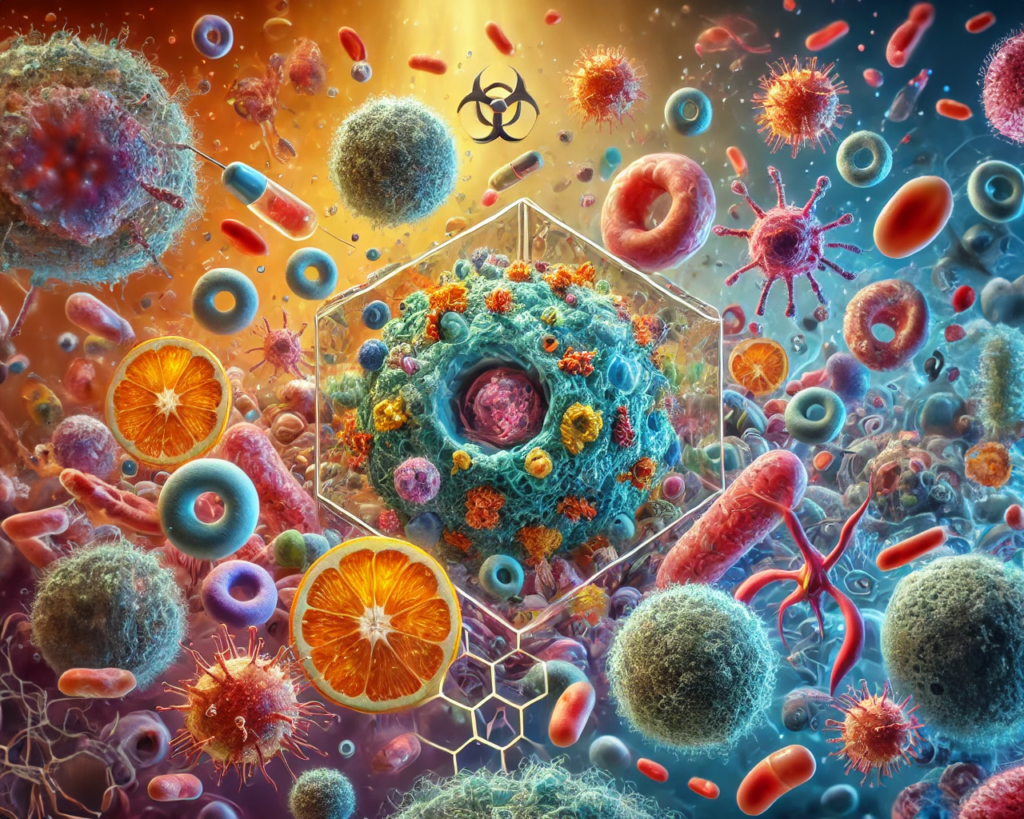Why You Need to Know:
Understanding this topic is crucial because inflammation is one of its primary tools for defending the body. However, when inflammation goes unchecked, it can contribute to chronic conditions like heart disease, diabetes, and autoimmune disorders. If you’re interested in optimizing health and longevity, managing inflammation is key to maintaining a balanced, well-functioning immune system.
The Immune System: Your Body’s Defense Mechanism
Function of The Immune System
The main function of this system is to act as your body’s defense network, designed to protect against harmful invaders like viruses, bacteria, and other pathogens.
Components:
It consists of two main components: the innate immune system and the adaptive immune system. The innate immune system provides a non-specific, immediate response to threats, using barriers like skin, mucous membranes, and immune cells like macrophages and neutrophils. The adaptive immune system, on the other hand, is highly specific and develops a targeted response through T-cells and B-cells, which can remember pathogens and respond more effectively upon re-exposure.
Cell Function
At a cellular level, macrophages act as “first responders” by engulfing pathogens, while lymphocytes (T-cells and B-cells) coordinate long-term, targeted defenses. Natural killer cells provide a crucial role by identifying and eliminating infected cells, preventing the spread of harmful invaders. All of these cells communicate using cytokines, proteins that direct the immune response.
The Immune System and Inflammation:
In inflammation, the immune system releases various signaling molecules (like interleukins and tumor necrosis factor-alpha (TNF-α)) to control the inflammatory response. This process is essential for fighting infections and healing injuries, but when unregulated, it can lead to chronic inflammation and disease.
Action Items:
- Incorporate Anti-Inflammatory Foods:
Research published in the Journal of Nutrition shows that a diet rich in omega-3 fatty acids, fruits, and vegetables can reduce chronic inflammation and support immune health (Calder, 2019). Add fatty fish, leafy greens, and berries to your diet to enhance immune function. - Get Enough Sleep:
A study from Nature Reviews Immunology found that inadequate sleep suppresses immune cell function, leading to increased inflammation (Besedovsky et al., 2012). Aim for 7-9 hours of sleep to support immune balance. - Exercise Regularly:
Moderate physical activity can improve immune system regulation and reduce chronic inflammation. According to a study in Frontiers in Immunology, individuals who engage in regular aerobic exercise have lower levels of inflammatory markers like C-reactive protein (CRP) (Gleeson et al., 2011). Incorporate Zone 2 cardio or resistance training for optimal benefits.



